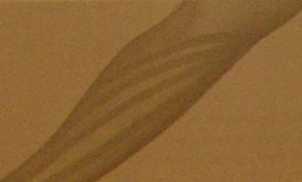P5140062
Lymphedema of the upper extremity is the result of edema Ihat 9 " 'tion. In an acute injury the degree of edema may be to sigriiflearit for«|_ short period of itfme. In a chronię condition tfielymph system is not abf norma] pathways and edema nas formed in the dependent extremity.
The Kinesio Ta ping Method wili assist in reducing edema by applicatiot technique. This is accomplished by lifting of the skin which decteas«jlS*M
normnl flow of lymphatic fluids ( for morę extensive review see IympnHn<r__
The practitioner wili need to determine where the lymphaticsystem nas diminished nc lon an ^ y application of the lymphałic correct i ve technique channel the fluid t^anothe^par^^h^ystenvw^^^JS functioning normally.
m a
f5Hccorrective •SffioWs for morę ?flve technique). I


Lymphatic drainage will be demonstrated from the distal to the proximaI lymph vessel. During practical application not alt sections may be required.
Application of lymphatic corrective technique from the hand to the elbow.
Have the patient place their hand in neutral and the elbow in extension. Place the base of Kinesio fan strip superior to the media] epicondyle of the hu-merus and direct the strips a cross the anterior aspect of the forearm towards the base of the thumb. Apply very light to light, 15-25% of available or paper off tension to the fan tails. The distal tip of the fan tails are applied with no tension.


Pptional Second Fan Strip: Forearm Place a second Kinesio fan strip either slightly bel o w or above the first strip.
Place the base of Kinesio fan strip superior or inferior to the medial epicondyle of the humerus and direct the strips across the posterior aspect of the forearm towards dorsum of the hand. Apply very light to light tension to the fan tails. The distal tip of the fan tails are applied with no tension.
For an optional technique for the hand to the elbow sec button hole technique at end of this technique application.
i

Axillarv Lymph Node is Functional; Upper Arm Have the patient move into shoulder abduction and extemal rotation. Place the base of the Kinesio fan strip near the axillary lymph node.
Direct the tails of the Kinesio fan strip towards the medial aspect of the elbow. Apply very light to light tension to the fan tails. The distal tip of the fan tails are applied with no tension.

located near the axillary lymph node.
Direct the tails of the Kinesio fan strip towards the latcral aspect of the elbow and or posterior region near the triceps. Apply very light to light tension to the fan tails. The distal tip of the fan tails are applied with no tension.

Direct the tails of the Kinesio fan strip over the midle deltoid muscle and towards the medial aspect of the elbow. Apply very light to light tension to the fan tails. The distal tip of the fan tails are applied with no tension.

Optional Second Fan Strip: Upper Arm Have the patient move into shoulder abduction
and horizontal flexion. Place the base of the Kinesio
muscles, either slightly higher or lower than the firs
fan strip near insertion of the teres minor and major
strip.
Direct the tails of the Kinesio fan strip over the posterior deltoid muscle and towards the posterior aspect of the upper arm in the triceps region. Applj Hi very light to light tension to the fan tails. The dista tip of the fan tails are applied with no tension.
Optional Strip towards neck or mid back lymphatic nodes.
Place base of Kinesio fan strip on cervical tram verse processes. Have the patient move into hori tal shoulder flexion and neck lateral flexion to opposite side. Direct the tails of the fan strip tow, the posterior aspect of the shoulder.
Wyszukiwarka
Podobne podstrony:
P5140085 Lymphedema of Lower Leg Lymphedema of the lower extremity is thc result of edema that forms
63The influence of waters.. The process of river water ąuality degradation in the area of Upper Sile
00 va dj snake the king of club (bootleg) 2006 41st Ol »»OJ SNAKE«« H m the king intro ft Big Ali 2R
53 Połączenie i unerwienie nerwów rdzeniowych szyjnych the upper extremity. Ann. Otol. Rhinol., Lary
The Innouation System ol a Tourist Enterprise - a Madei Approacii systems functioning in an external
carving?ceY Rangę of Expressions 5 9 normal, open-eyed, raised eyebrow is carved t
MM Uzarski DEPARTMENT OF GOVERNMENT STU Dl ES The Limits oł EUrope: Challenging the Crisis
P5140011 surę are examples of subtle changes mitted from the Kinesio Tex Tape to the superficia
P5140015 The space correction is applied to create more space directly above an area of pain, i
P5140020 Lymphatic Correction The lymphatic corrcction is used to assist iii the removal of edema by
P5140042 w With the arm still in an abducted D niiddle of the paper backing of an ar?‘^ te. ine
P5140070 Dislocation ofthe PhaJanges of the Fingers Dislocationsof the phalanges occurat a high ratę
Fitzgibbon, Constantine Secret Intelligence BS THE SECRET WAR THAfNEVERENDS... The role of under
image001 The most ezdting fiction of our time! *13 in “The most celebrated ‘All-OriginaP senes in Sc
00100 ?e6667c29dfdea3c59f1657bb3f2b02 99 The OCAP manufacturing process remains in an unknown State
więcej podobnych podstron